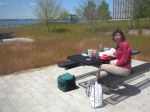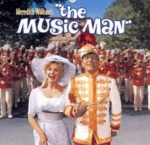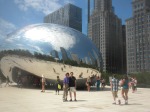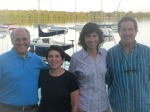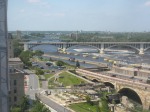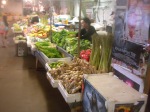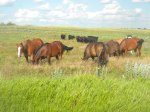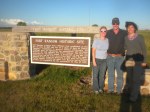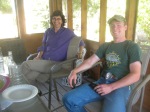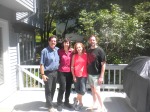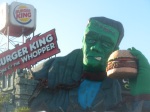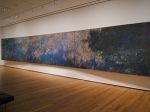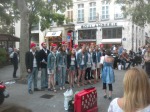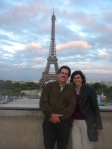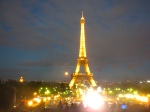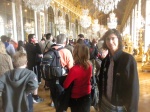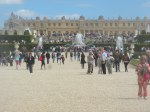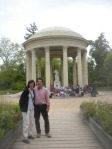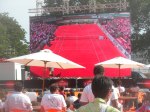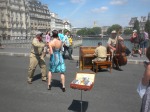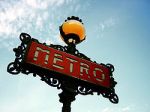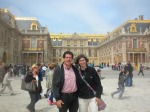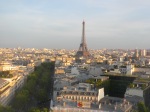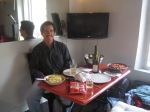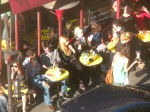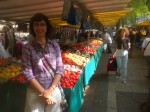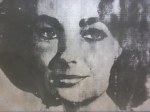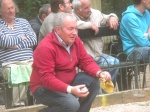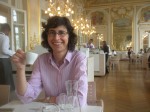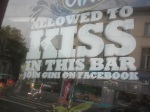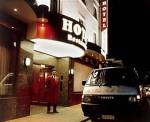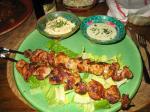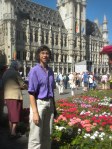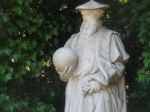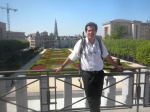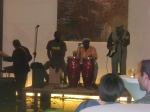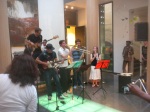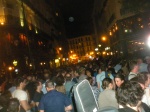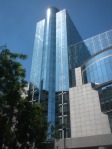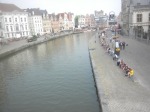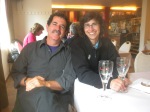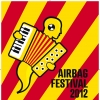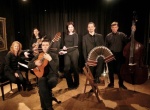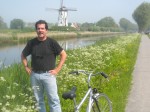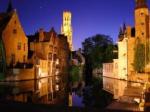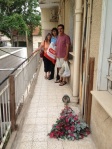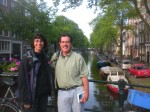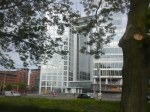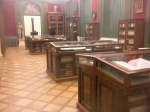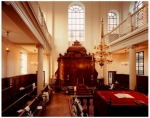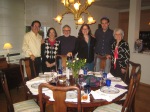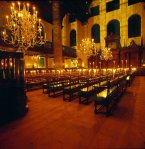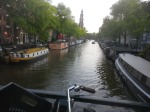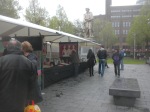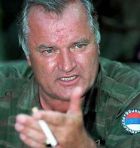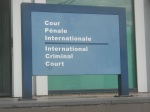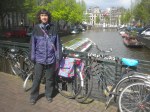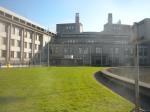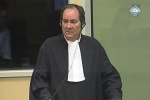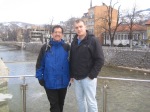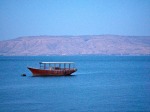(This post is being published without pictures, due to some technical difficulties that I’m having trouble sorting out. I’ll keep trying to load pictures. Check back in a few days to see if I got them to load.)
We began this adventure very early in the morning last September fourth. We dropped Naomi off at SeaTac for her flight to Israel and we drove south, and at that moment, everything was open-ended, and the return home was a great distance away. We have now covered that distance, and more. We headed down the freeway that day, not knowing what was in store, expecting nothing more than something different from our daily lives. Oh my. Everything was different.
Our last stretch of road began in Verona, North Dakota, and we drove away from Mike and Dana’s place with them waving in the rearview mirror. We’re looking forward to our next visit. We crossed the sections and subsections of homesteaded America, where roads mark areas settled and farmed early in the last century, if not before. We drove across beautifully farmed and grazed lands, south and west, until we reached the Badlands of southwestern South Dakota. In the late afternoon we arrived in world-famous Wall, South Dakota, made so famous by the crazy and amazing marketing of the Hustead family’s drug store, Wall Drug. Under threatening skies, we walked from our lovely one-star motel over to Wall Drug, and this being a Friday afternoon, figured we’d find a minyan for sure. No minyan, but one heck of a tasty buffalo burger (no cheese!) for me and yet another veggie burger for Beth made a fantastic Shabbat dinner. Plus the free ice water, of course. Wall Drug is a place worth seeing. I might not make a special trip to South Dakota for the experience, but if you’re in the ‘hood, it’s a goof. It’s actually huge, maybe twenty adjoining stores, a kind-of kitch mega-mall full of the kind of specialized chotchkes that you just can’t find anywhere else. It’s better that way.
The next day, we spent the morning in nearby Badlands National Park, finding a few good, short hikes, and also finding lots of water everywhere. It had been a wet spring, so many of the hikes were rather slippery and sloppy, but we endured and enjoyed it anyway. From there we headed west a bit more, and after passing one of each fast food joint that exists in the known world, we were at Mt. Rushmore.
Mt. Rushmore is very cool. It’s kind of like, dare I say, the Eifel Tower or the White House…places that you’ve seen a million times, but seeing it in person is just breathtaking. We paid the exorbitant parking fee and spent a good couple of hours wandering the site, catching views of George, Tom, Abe and Teddy from a variety of different angles, and views of so many of our fellow Americans from different angles as well. The place is an architectural and artistic wonder. It is larger than life, to state the obvious. And the people we saw that day at Mt. Rushmore were also a wonder. What an assortment of people we are! All different shapes and sizes, speaking all sorts of different languages, in family groups as different as snowflakes. We were not long ago in places where ethnicity and national origin are everything…everything. In America, there is definitely something different going on. We don’t all speak the same language or eat the same foods or tell the same stories. But we all go to Mt. Rushmore and take pictures and laugh and goof around with our parents, siblings or kids. Another obvious statement: America is different. It’s good to get away a bit to come back and realize that.
We scouted out a great place for a picnic lunch, and then made a mid-afternoon exit, continuing on our western journey, getting closer and closer to home with each mile. As we moved west into Wyoming, farmland became ranch land, and somewhere along the way, the places just seemed more familiar. Maybe it was the trees or the spaces or something. We were heading West. Homeward Bound.
We spent the night in Sheridan, Wyoming, a way-station between Mt. Rushmore and our next American icon, the Grand Tetons. By late afternoon the next day we were in Jackson Hole, Wyoming, gateway to the Tetons. Another great American vacation town, reeking of kettle corn and full of things to buy that you won’t ever use again. Lots of nice hotels and motels, though, and the option of taking a horse and buggy ride was hard to resist. But we did.
Once we were close to the Tetons we stopped and gaped in awe at the mountains, and tried to get close-up photos of the distant buffalo and pronghorn antelope that were well beyond the power of our pocket-sized digital cameras. The next day we got up very early to beat the heat and the crowds and enjoyed a great, flat and scenic hike around Jenny Lake. Quiet, pristine, beneath the imposing Tetons. Then it was back to Jackson Hole for some quiet in the afternoon, and then a movie! We finally saw The Best Exotic Marigold Hotel, a movie that everyone who knew we’d been to Jaipur said we had to see. OK, we saw it, and we loved it! I was almost in tears watching those India scenes—it brought us back to that place in a hurry. I recall whispering to Beth during the movie, “Can you believe we did that?”, and both of us just shaking our heads. Just for the record, we were in both Jaipur, the main city where the Hotel is located, and Udaipur, the city with the lake where the cremation takes place. Both amazing places, strongly recommended. See earlier posts, from January, for details.
The next day, we drove up the road a couple of hours to Yellowstone. We drove directly to Old Faithful, knowing that we had to check that one off our lists before we could do anything else. And we’re glad we did, because Old Faithful is only part of something much, much larger.
We went to Yellowstone not expecting to be impressed…and we were very, very wrong. Yellowstone was amazing. The area around Old Faithful, the geothermal area, is huge, and each of the dozens of cracks in the earth that emit water or steam or both, are very, very cool. We walked along walkways and trails between the vents, and each one was different and worthwhile. Back in the car we drove for a while, and there were different areas of even more vents, some spouting water high into the sky, some bubbling up mud that seemed almost magical, some just smelling of rotten eggs. The crowds were big, but the areas are huge, the infrastructure is easy to navigate and well-maintained, and overall, the whole place was great. Of course we saw buffalo and even elk, right up next to our car, with no need for a zoom lens. No bear, though. Not too disappointed.
After a day in the geothermal area, we spent the next day in the Grand Canyon of the Yellowstone, almost an entirely separate park with a spectacular river running through a breathtaking canyon. Again, easy accessible by foot or car, large enough to accommodate the crowds that were there, photogenic to the max. Yellowstone—what a great idea!
Leaving Yellowstone, we know we’re almost home. OMG. We caught a night’s sleep in lovely Butte, Montana as we crossed and recrossed the Continental Divide, zeroing in on Spokane. Montana is wide and beautiful—we need to return and do some more exploring, especially off the I-90 corridor. Montana gave way to a little bit of the Idaho panhandle, and before you know it, we’re in Spokane—we’re as good as home. We visited with friends and family there, spent the night with Beth’s brother and his family, and hit the road in the morning. Once the signs started to read “Seattle”, I knew the party was almost over. We’ve done the drive between Spokane and Seattle countless times, but this one was different. I was driving it a bit slower than usual. It’s not like I didn’t want to get home or see the people in Seattle. It’s just that I didn’t want this year to end.
We had our last lunch out of the picnic cooler at some rest stop along the way, one that we’d eaten at before more than once with the girls, and then, it was up and over the Cascades and down the other side, into the clouds and home. We arrived on a Friday afternoon, and before you know it, the whole family is over at Beth’s parents’ place for a wonderful welcome home dinner. How great it was to see Naomi and everyone else! How great it was to be home! How great it had been to be away!
People like us don’t often get to do this kind of thing—to travel, live on the road, live abroad, enter the lives of others and impact their lives as they impact ours. We lived it up! We tried to take advantage of each and every day, either by meeting new people, seeing new things, eating new foods, having new adventures. Back in Seattle, we’ll try to learn from this by taking each day on, looking for new people, new things, new foods, and new adventures to add to our year of wonder. The challenge, and the fun, is to keep the year going, even at home, even back in the good old 98115, back in our little red house surrounded by our friends and neighbors. We might not be able to pull off another year of living on the road like we just completed, but that does not mean that we can’t pull off more adventures, more new things, eating more meals off banana leaves or drinking more Belgian beer. We’ve had a taste of all that—we can’t be expected to just give it all up!
Home we are. Location matters–we saw that everywhere we went. Location affects how people live, and we live very well, in the nice northwest city that we have chosen. It’s great to be back in our house, among our family and our friends and our stuff.
Thanks for reading this. Writing this blog has been fun—it’s forced me to think about what I’ve seen and done and put some form to my thoughts. I hope you enjoyed it. Be in touch. David

